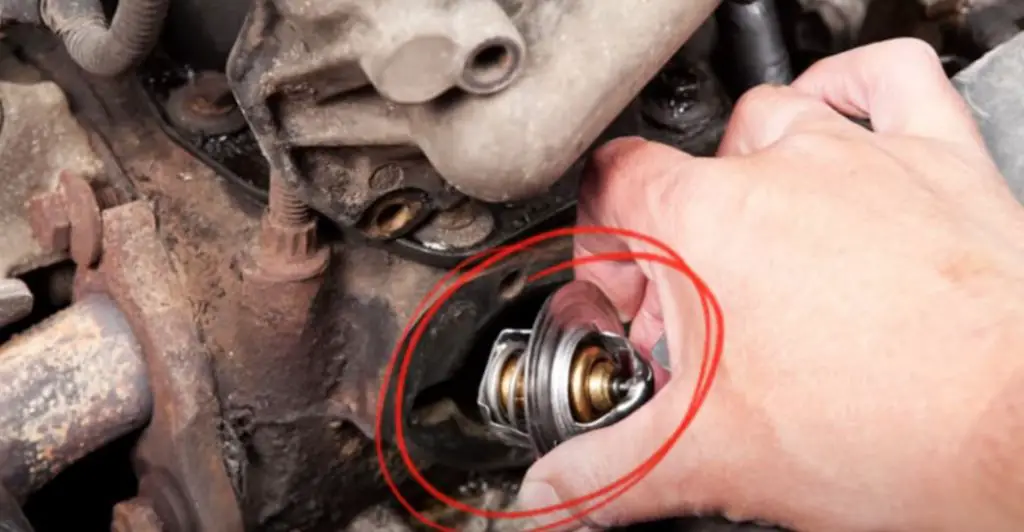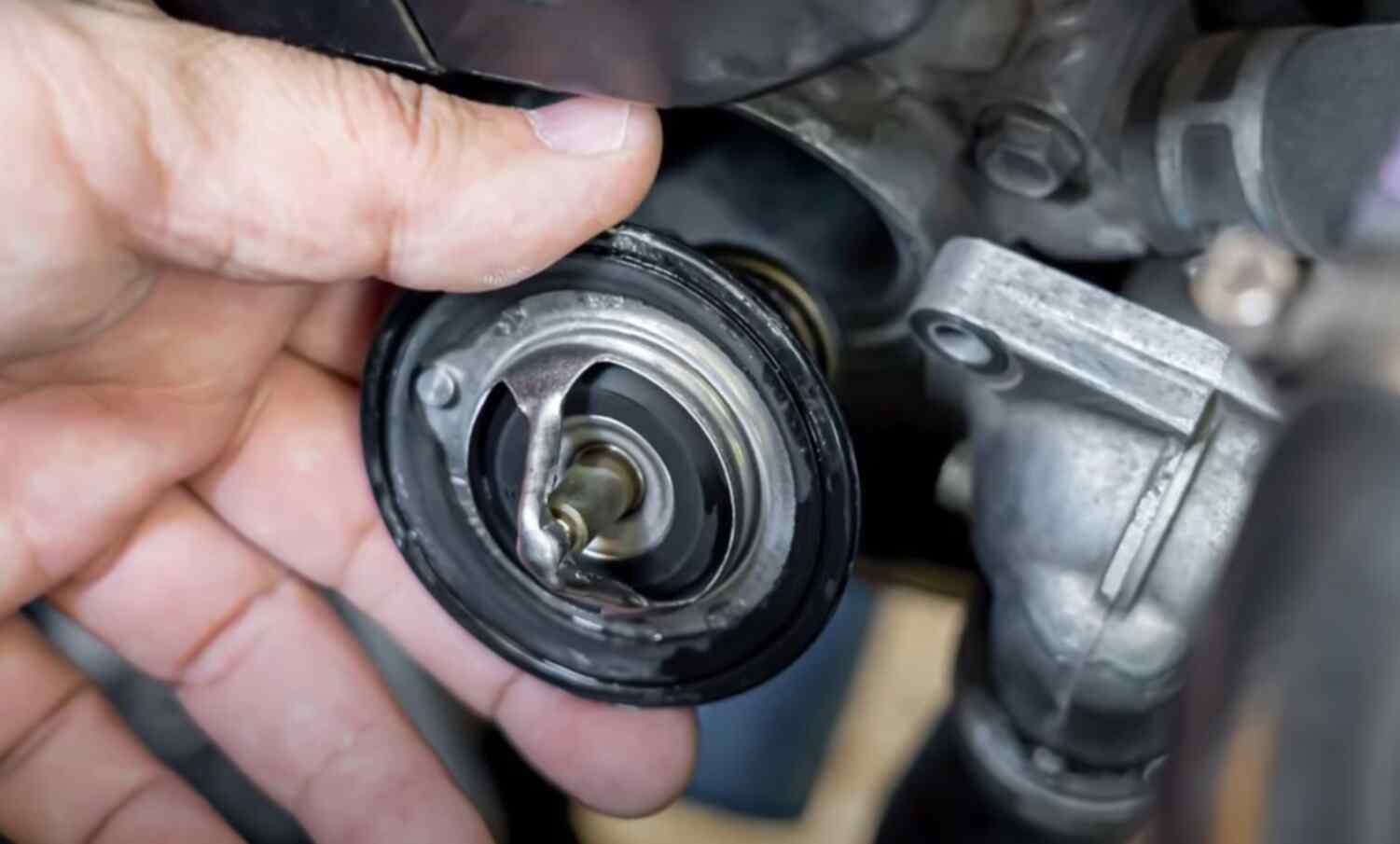How Long Does A Thermostat Last And How Much Is Its Replacement Cost?
The thermostat in the car is responsible for monitoring and regulating the radiator coolant temperature. It typically lasts 10 to 15 years or around 75,000 to 100,000 miles with ease. In fact, the thermostat in your car can even last more than 150000 miles with proper maintenance and care.
So, the next time you ask, “How long does a thermostat last in a car?” You should know that it won’t bother you for a long time. It may last for the entire lifespan of your car. However, the check engine sign may pop up in your vehicle when the thermostat goes wrong. Also, the engine may overheat or become too cold when the radiator coolant thermostat stops working.
Henceforth, today, we will discuss the average lifespan of a thermostat, the signs of a failed thermostat, its maintenance, and related factors. If you doubt that the thermostat in your car needs replacement, continue reading to know its cost, too.
Understanding Car Thermostats
A thermostat is a temperature-regulating device in an automobile’s cooling system. It controls the flow of coolant from the engine to the radiator. The thermostat checks the engine temperature, allowing the coolant mixture and antifreeze to flow into the radiator. So, the radiator can operate adequately to manage the engine temperature to the recommended level. Detail is here
It also ensures the engine heats quickly and maintains a consistent operating temperature. There are three types of thermostats available for vehicles:
- Conventional wax thermostats
- Electrically heated wax thermostats
- Electrically actuated thermostats
The wax-pellet thermostat is the most common type of automobile thermostat. It expands and contracts in response to temperature changes, controlling the coolant flow accordingly. In modern cars, electronic thermostats offer more precise temperature regulation. Recognizing a failing thermostat is critical. The vehicle’s computer system controls the electronic thermostat.

How Long Does A Thermostat Last?
How long does a thermostat last? The average lifespan of a thermostat in the vehicle is 10 to 15 years. In terms of mileage, the thermostat will easily stay for 75,000 to 100,000 miles. So, you can expect the thermostat to last for the car’s entire lifespan.
Nonetheless, different variables contribute to the overall lifespan of the coolant radiator thermostat. It includes vehicle make and model, driving habits, and maintenance routines. All these factors can significantly impact the timeline. It’s not uncommon for thermostats in some vehicles to fail earlier or, conversely, to last well beyond this range.
Factors Affecting Thermostat Longevity
As we have mentioned, the lifespan of a car’s thermostat depends on different factors. You must understand these factors to take proactive steps to ensure your vehicle’s thermostat functions optimally for the longest time.
Quality of the Thermostat:
The quality of the thermostat depends on its material, brand, and quality comparison with its pricing. Higher-quality thermostats are usually made from durable materials, including a single metal strip or bi-metal coil. Also, it should withstand the rigors of engine operation better.
Next, reputable brands often invest more in research and quality control. It leads to more reliable and long-lasting products.

Engine Operating Conditions:
The frequency of the short trips also contributes to the thermostat’s lifespan. Driving your car frequently for short journeys can prevent the engine from reaching its recommended operating temperature. Also, it causes the thermostat to open and close more often, which leads to wear.
Heavy towing and high-performance driving put stress on the engine. Hence, the engine has to operate at higher temperatures. It puts more strain on the thermostat.
Coolant Quality:
It’s crucial to use the correct type of coolant as specified by the vehicle manufacturer. If you use the wrong coolant type, it might lead to chemical reactions. So, it will cause deposits and hinder the thermostat’s function. Furthermore, regular servicing of the cooling system, including flushing and refilling, provides a stable environment for the thermostat.
Old coolant can become acidic over time. It will lead to corrosion of the thermostat and other cooling system components. Regular changes keep the coolant fresh and less corrosive. On the other hand, mixing different types of coolants can lead to chemical reactions. So, it might produce sludge and deposits, affecting the thermostat’s operation.
Environmental Factors:
The cooling system works harder in scorching climates to maintain engine temperature. It might shorten the thermostat’s life. Conversely, the thermostat may become less responsive in icy environments over time.
Plus, environments with high levels of pollutants or salt (like coastal areas) can accelerate the corrosion of metal components, including the thermostat. So it will corrode faster. Also, regular exposure to wide temperature fluctuations can cause metal fatigue in the thermostat. It will lead to thermostat failure.
Symptoms of Thermostat Failure
When the thermostat in your car starts failing, it can manifest in several ways. You must clearly understand these thermostat failing symptoms to fix them ASAP to avoid further issues.

Engine overheating or underheating:
A damaged thermostat prevents coolant from flowing to the radiator. Often, it will cause the engine to overheat. Conversely, a thermostat stuck in the open position will lead to constant coolant flow, preventing the engine from reaching its optimal operating temperature.
Therefore, the engine will remain underheating. Both conditions are harmful:
- Overheating can cause engine components to fail
- Underheating leads to increased engine wear due to inadequate lubrication at lower temperatures
Irregular Temperature Readings:
Sometimes, the temperature gauge on the dashboard might show erratic readings. You might see it swinging from high to low unpredictably. It occurs when the thermostat opens and closes irregularly, disrupting the normal flow of coolant and causing temperature fluctuations.
Impact on Fuel Efficiency:
An often-overlooked symptom of a failing thermostat is a decrease in fuel efficiency. The engine will consume more fuel if the thermostat does not maintain the recommended temperature. For instance, an engine running cooler than optimal heat will cause the fuel-air mixture to burn less efficiently. As a result, it leads to increased fuel consumption.
Engine check message:
Last, the dashboard might warn you with the engine check message. As it happens, it’s sure that the engine is not performing well. So, you should check the engine coolant, radiator, and thermostat to find the actual cause of it.
Maintenance Tips to Prolong Thermostat Life
Regular maintenance and attention will significantly prolong the life of your car’s thermostat. Also, the thermostat will function properly to maintain the engine at perfect temperature.

Regular Vehicle Checks:
You must include thermostat checks in your regular vehicle maintenance routine. It includes:
- Monitor the engine temperature gauge for abnormal readings
- Check the coolant for leaks around the thermostat housing.
- During a service check, a mechanic can also assess the thermostat’s condition.
Quality Coolant:
You must use proper and recommended antifreeze and coolant for your car. For instance, you can use the Prestone – Antifreeze and Coolant 50/50 for Jeep Wrangler. If you use the wrong coolant for the car engine, it can damage the
Moreover, coolant loses its efficacy over time due to the breakdown of its chemical components. So, you need to change the coolant promptly, typically every 30,000 to 50,000 miles. It will prevent buildup and corrosion, affecting the thermostat’s operation.
Timely Response to Warning Signs:
Lastly, you must quickly recognize and respond to the symptoms of thermostat failure to avoid more significant issues. If you notice any signs of thermostat malfunction, such as overheating, underheating, or erratic temperature readings, immediately call for a professional.
The mechanic will check the thermostat and radiator to see if it needs replacement.
Car Thermostat Replacement Cost:
The average car thermostat replacement cost is around $200 to $600. The cost includes the price of the thermostat itself and labor charges. It can be a cost-effective repair for DIY enthusiasts, but caution is advised to avoid incorrect installation. Or else it can lead to more significant issues.
You should replace the thermostat in the automobile shop to avoid inconvenience. It’s crucial since you need to work with the radiator and thermostat for a proper replacement.
Frequently Asked Questions
1. Can a car operate without a thermostat?
While possible, running a car without a thermostat is not recommended. A car running without the thermostat can reduce engine efficiency and increase wear over time. At worst, it can damage the engine ultimately.
2. How often should you change the coolant?
You should change the coolant every 30,000 to 50,000 miles. The coolant changing frequency would be higher in higher temperatures and for frequent off-roading.
3. Can I test a thermostat myself?
Yes, you can observe the engine temperature gauge for fluctuations. Also, you might conduct a physical inspection if you know vehicle mechanics.
4. Is thermostat replacement a costly repair?
Compared to other automotive repairs, thermostat replacement is relatively affordable. In most cases, you can replace the thermostat within $500.
Final Words
Though small, the thermostat is essential to maintain the engine’s temperature and health. On average, the thermostat will last 10 to 15 years, often parallel to your car’s lifespan. You should keep the radiator and thermostat clean and change the coolant timely to help the thermostat run as long as possible.
Also, regular radiator and thermostat maintenance will help the engine deliver its peak performance. So you will enjoy better performance and driving smoothness.
Also Read: How much does it cost to regear a jeep







